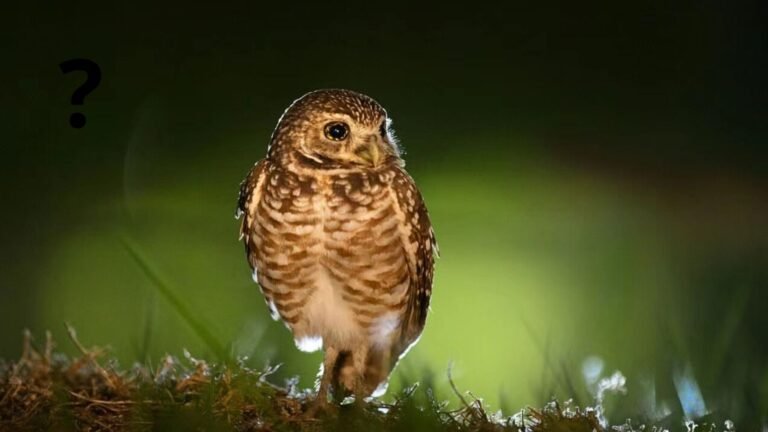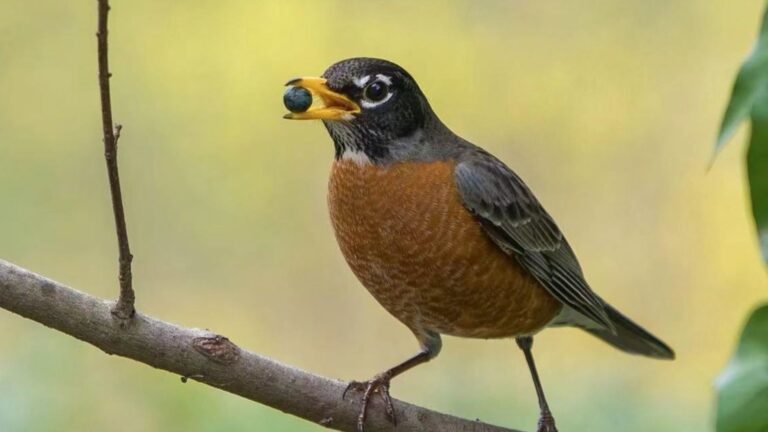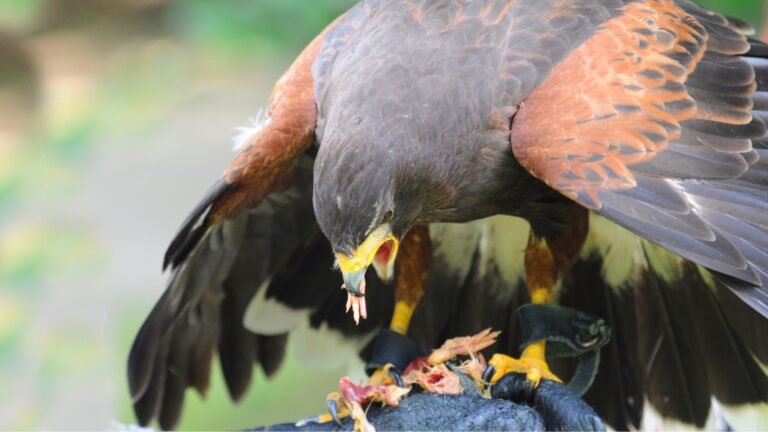Why Do Birds Chirp?
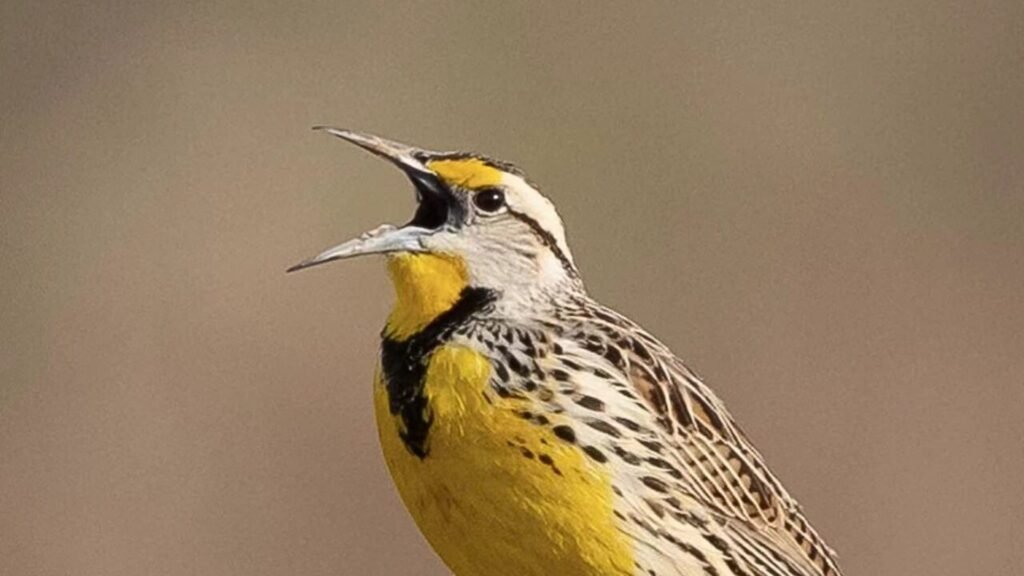
Bird chirping is a common sound in nature, but have you ever wondered why birds chirp?
Understanding the purpose of bird chirping, how birds produce these sounds, and the different types of chirping can provide valuable insights into the behavior of our feathered friends.
In this article, we will explore the reasons behind bird chirping, the various types of chirps, factors that affect their chirping, and how humans can interpret and attract birds to chirp in their yards.
Let’s dive into the fascinating world of bird communication!
What Is Bird Chirping?
Bird chirping is a form of vocal communication among avian species, characterized by distinct vocal patterns and song repertoires.
Birds use chirping not just to communicate but also to establish territories, attract mates, and warn fellow birds of potential dangers. The variety of vocalizations and behaviors exhibited during chirping serve different purposes in the intricate social dynamics of bird communities. From melodious songs to sharp alarm calls, these vocalizations are deeply ingrained in ornithology as researchers study how avian vocalization plays a crucial role in reproductive success and overall survival strategies within diverse ecosystems.
Why Do Birds Chirp?
Birds chirp for various reasons, including mating displays, social interactions, territorial signaling, and responding to environmental cues.
During mating season, bird chirping plays a crucial role in courtship rituals as males showcase their fitness and attract potential mates through intricate songs. The complexity and vigor of a bird’s chirping often indicate its overall health and genetic quality, influencing its success in breeding.
In social settings, chirping helps establish hierarchies within flocks, maintain group cohesion, and communicate danger or resources. Territorial communication through distinct chirping patterns helps birds defend their territories, mark boundaries, and warn off intruders, ensuring access to food, shelter, and nesting sites.
What Is the Purpose of Bird Chirping?
The purpose of bird chirping extends beyond mere vocalization, serving as a vital means of communication for social bonding, language development, and conveying adaptive signals.
These melodious sounds play a crucial role in strengthening social bonds among avian communities, fostering cooperation and cohesion within their groups.
Bird chirping is essential for the linguistic development of young birds, helping them learn and mimic different calls and songs to effectively communicate with each other.
These chirps and tweets are not just pleasant notes but also serve as important environmental cues, signaling danger, food availability, or territorial boundaries in the ever-changing natural world.
How Do Birds Chirp?
Birds produce chirping sounds through the vibration of their vocal cords, influenced by biological rhythms, vocal anatomy, and the ecological context in which they reside.
The vocal cords of birds play a crucial role in sound production. These specialized structures are located at the base of the trachea and consist of thin membranes that vibrate when air passes through them. Certain bird species have developed unique anatomical adaptations, such as the syrinx, a vocal organ located at the junction of the trachea and bronchi, allowing for complex sound modulation.
Ornithological studies have shown that the timing of chirping is tied to the bird’s internal biological clock, with patterns influenced by factors like daylight duration and social interactions within their habitat.
Types of Birds Chirping
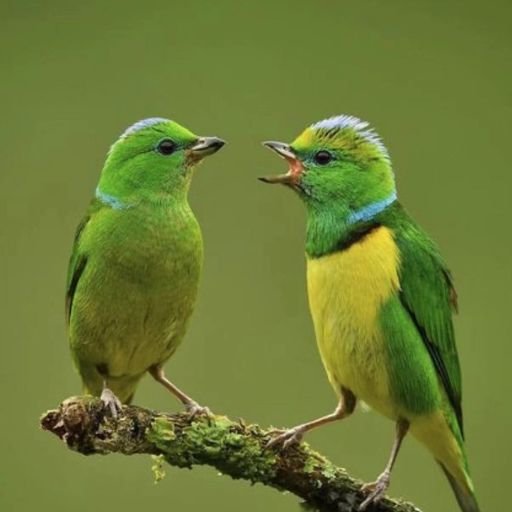
Bird chirping encompasses various types, including alarm calls, courtship signals, territorial displays, and contact calls, each playing a crucial role in avian communication.
Alarm calls serve as a warning mechanism, alerting other birds in the vicinity to potential dangers, such as predators.
Courtship signals, on the other hand, are used by birds to attract potential mates, showcasing their fitness and genetic quality through melodious tunes and elaborate displays.
Territorial communication through chirping helps establish and defend boundaries, ensuring access to resources and mates.
Contact calls are essential for maintaining social cohesion within bird flocks, facilitating group cohesion and coordination during activities like foraging and migration.
Alarm Calls
Alarm calls are a critical form of bird chirping used to alert others of potential threats, such as predators, ensuring the safety of the flock through effective alarm communication.
These vocalizations serve as emergency signaling mechanisms within the avian world, allowing birds to quickly convey danger and coordinate defensive actions. By recognizing the specific alarm calls of their companions, birds can gauge the level of threat and respond accordingly, whether by fleeing, hiding, or mobbing the predator. This heightened situational awareness facilitated by alarm calls not only aids in individual bird survival but also strengthens the collective security of the entire flock against potential dangers in their environment.
Courtship Calls
Courtship calls are melodious chirps that play a central role in avian mating rituals, often accompanied by elaborate courtship displays to attract potential mates.
These calls serve as vital communication tools among birds, conveying information about mate quality and reproductive status. The intricate melodies and unique patterns of courtship calls are key indicators of an individual bird’s fitness and genetic superiority, influencing mate choice.
Through these calls, birds signal their willingness to engage in courtship rituals and potentially form breeding pairs. The synchronized choreography of courtship displays, coupled with the enchanting courtship calls, create a mesmerizing spectacle that showcases the vitality and desirability of the mating partners.
Territorial Calls
Territorial calls are assertive chirps used by birds to demarcate breeding territories and resolve territorial disputes through vocal interactions.
These calls play a crucial role in avian behavior by helping individuals establish boundaries and defend their claimed areas from intruders. When a bird senses a potential threat to its territory, it will emit specific vocalizations to communicate its ownership and warn the intruder. By engaging in these vocal interactions, birds can avoid physical confrontations, reducing the risk of injuries and conserving energy for essential activities like foraging and mating.
Territorial calls serve as a way for birds to attract mates and reinforce pair bonds, further highlighting their significance in the intricate dynamics of avian social behavior.
Contact Calls
Contact calls are soft, reassuring chirps that foster flock cohesion and facilitate social interactions among birds, strengthening the bonds within avian communities.
These vocalizations serve as a vital means of communication, enabling birds to stay connected and coordinated, especially when flying in formation or foraging together. By emitting contact calls, birds can relay important information about food sources, potential threats, or simply maintain their presence within the group.
This constant chatter helps in coordinating group movements, ensuring that all members are aware of each other’s whereabouts and activities. Contact calls play a crucial role in reinforcing social hierarchies, as dominant individuals often use them to assert their presence and maintain control over the flock dynamics.
Do All Birds Chirp?
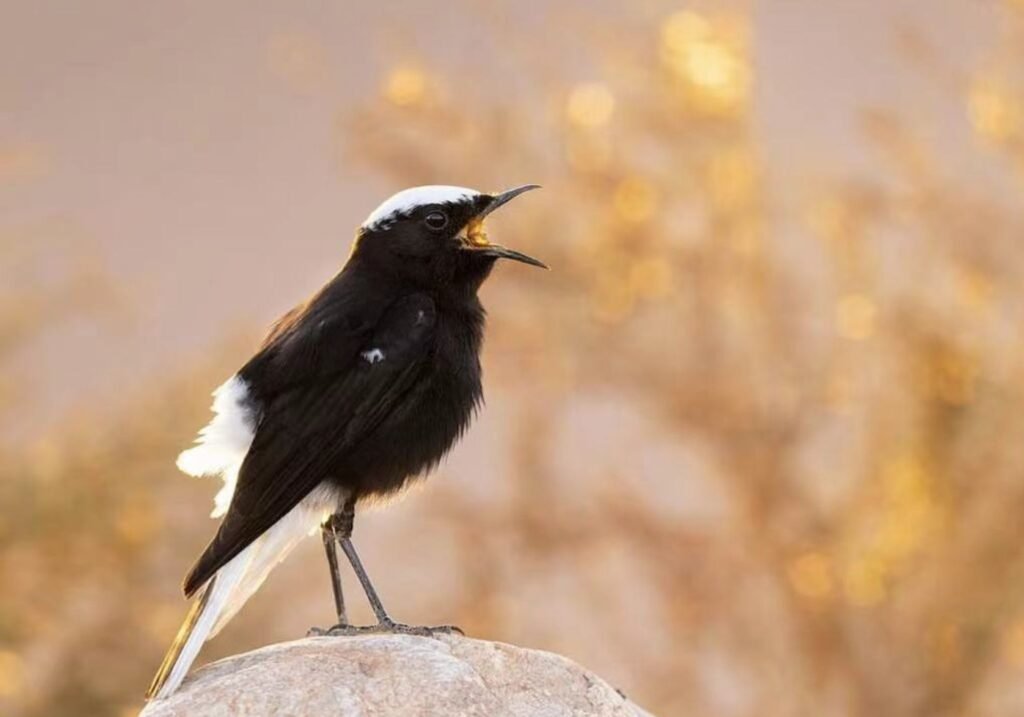
While most bird species are capable of chirping, the vocalization patterns and sound production mechanisms may vary significantly among different avian groups.
One fascinating aspect of bird communication is the diverse range of chirping behaviors exhibited by various species. For instance, songbirds like nightingales and warblers produce melodious chirps that serve as elaborate courtship displays. On the other hand, some birds, such as sparrows and finches, utilize chirps for territorial defense and warning calls.
The intricacies of sound production differ across bird families; for example, oscines use a sophisticated syrinx apparatus to produce complex tunes, while non-oscines rely on different anatomical structures for their chirping repertoire. This rich tapestry of avian vocalizations showcases the intricate ways in which birds communicate within and across species.
What Are the Factors That Affect Bird Chirping?
Bird chirping is influenced by various factors, including seasonal changes, time of day, weather conditions, and environmental cues that shape the frequency and intensity of avian vocalizations.
Seasonality plays a crucial role in the timing and duration of bird songs, with many species adjusting their vocalizations to coincide with mating seasons or migratory patterns. Diurnal patterns also impact bird chirping behavior, as birds tend to be more vocal during dawn and dusk when visibility is limited. Environmental stimuli such as the presence of predators or the availability of food sources can trigger specific calls or modify the overall communication strategies among bird populations.
Season
Seasonal variations play a significant role in bird chirping, with distinct changes observed during the breeding season when avian vocalizations peak to attract mates and establish breeding territories.
During these periods, male birds often utilize their songs to not only signal their presence to potential partners but also to communicate dominance and strength to rival males in the area. In contrast, outside of the breeding season, bird chirping tends to be more sporadic and less intense, serving as a means of general communication and maintaining social bonds within flocks.
Understanding these seasonal shifts in bird vocalizations is crucial for researchers studying avian behavior and ecology, as it provides insights into the intricate interplay between environmental cues, reproductive cycles, and communication strategies in birds.
Time of Day
The time of day, particularly the dawn chorus, is a crucial period for bird chirping, as many species engage in intense vocal displays to mark territories and initiate social interactions during the early hours.
Birds have evolved to follow diurnal patterns, which are natural biological rhythms that influence their behavior and activities. The dawn chorus not only serves as a means for birds to establish territorial boundaries through vocal communication but also plays a significant role in synchronizing avian activities within a community.
By engaging in early morning vocalizations, birds can communicate with neighboring individuals, attract potential mates, and announce their presence to competing members of their species. The intensity and timing of the dawn chorus can vary depending on factors such as breeding season, habitat characteristics, and social structure among bird populations.
Weather
Weather conditions can impact bird chirping, with changes in atmospheric conditions affecting the transmission of acoustic signals and altering the sensory perception of avian vocalizations.
For birds, the way they communicate through their distinct calls and songs is crucial for survival, navigation, and social interactions. When the weather shifts, such as during windy or rainy conditions, the sound waves produced by birds can be either amplified or distorted, influencing how far their calls travel and how clear they are heard by other birds. This can affect their ability to establish territories, attract mates, or warn of potential dangers. Variations in temperature and humidity levels can impact the quality and reception of signals, shaping the intricate web of avian communication systems.
Can Humans Interpret Bird Chirping?
Humans can interpret bird chirping to a certain extent, relying on auditory cues, sensory perceptions, and learned patterns to understand the communicative signals embedded within avian vocalizations.
This ability to decipher bird chirping showcases the intricate relationship between humans and birds, highlighting the fascinating world of avian communication. Auditory communication plays a crucial role in this interpretation process, as individuals tune in to the varying pitches, rhythms, and tones of bird calls.
Through sensory interpretation, humans can detect nuances in the soundscape, recognizing specific calls for mating, warning, or territorial functions. Language development further enhances our capacity to decode bird chirping, allowing for a deeper understanding of the messages conveyed by our feathered counterparts.
How Can You Attract Birds to Chirp in Your Yard?
Creating a bird-friendly environment in your yard can attract various bird species to chirp, providing opportunities for birdwatching and fostering flock cohesion through the use of bird calls and environmental enhancements.
To enhance your chances of attracting chirping birds to your yard, consider planting a diverse range of native trees, shrubs, and flowers to provide food sources and shelter. Creating a birdbath or a small pond can also be enticing for birds. By hanging bird feeders filled with different types of seeds, you can encourage a variety of species to visit your yard.
Using recordings of bird songs or calls can help attract specific bird species, but remember to minimize the volume to avoid disturbing the natural behavior of birds in the area.
Provide Food and Water
Offering ample food and water sources in your yard can encourage birds to chirp and engage in birdwatching activities, creating a sustainable ecosystem for avian visitors.
By providing a variety of seeds, fruits, and nectar, you can cater to the dietary needs of different bird species, enticing them to frequent your outdoor space. Water sources like birdbaths or small ponds not only quench their thirst but also serve as bathing spots, enhancing their overall well-being. This habitat provisioning plays a crucial role in attracting a diverse array of feathered friends, enriching your birdwatching experiences with unique sightings and interactions.
Observing these beautiful creatures in their natural habitat brings a sense of tranquility and connection to the wildlife around us.
Create a Bird-Friendly Environment
Designing a bird-friendly environment in your yard involves landscaping choices that mimic natural habitats, promote social bonding among birds, and provide nesting sites that encourage chirping and avian interactions.
By incorporating native plants, you can attract a variety of bird species that are adapted to your region’s climate and food sources. Trees, shrubs, and grasses offer different layers for birds to perch, nest, and forage, creating a diverse ecosystem within your own backyard.
Water features like birdbaths or small ponds can serve as refreshing spots for birds to drink and bathe. Maintaining a pesticide-free environment is crucial to safeguarding the health of these feathered visitors, ensuring they have access to food sources free from harmful chemicals.
Use Bird Calls or Recordings
Utilizing bird calls or recordings can simulate natural vocalizations, attracting chirping birds through familiar sounds and potentially encouraging vocal mimicry or response behaviors in avian visitors.
This method essentially sets the stage for interactivity between different bird species, as the recorded calls can act as a form of communication that invites varied feathered friends to engage in vocal exchanges.
By strategically placing these audio stimuli in your yard, you can create a dynamic and harmonious environment where birds feel welcomed and inclined to linger.
Mimicking avian vocalizations not only adds an element of liveliness to your outdoor space but also presents the opportunity for you to witness fascinating and diverse bird behaviors up close.

